If I want to modify a PCW to work with an LCD screen, I thought I should get myself a second PCW, so that I don't destroy the only one I have. So I bought one on eBay for £5.50, and I fetched it from Sheffield yesterday.
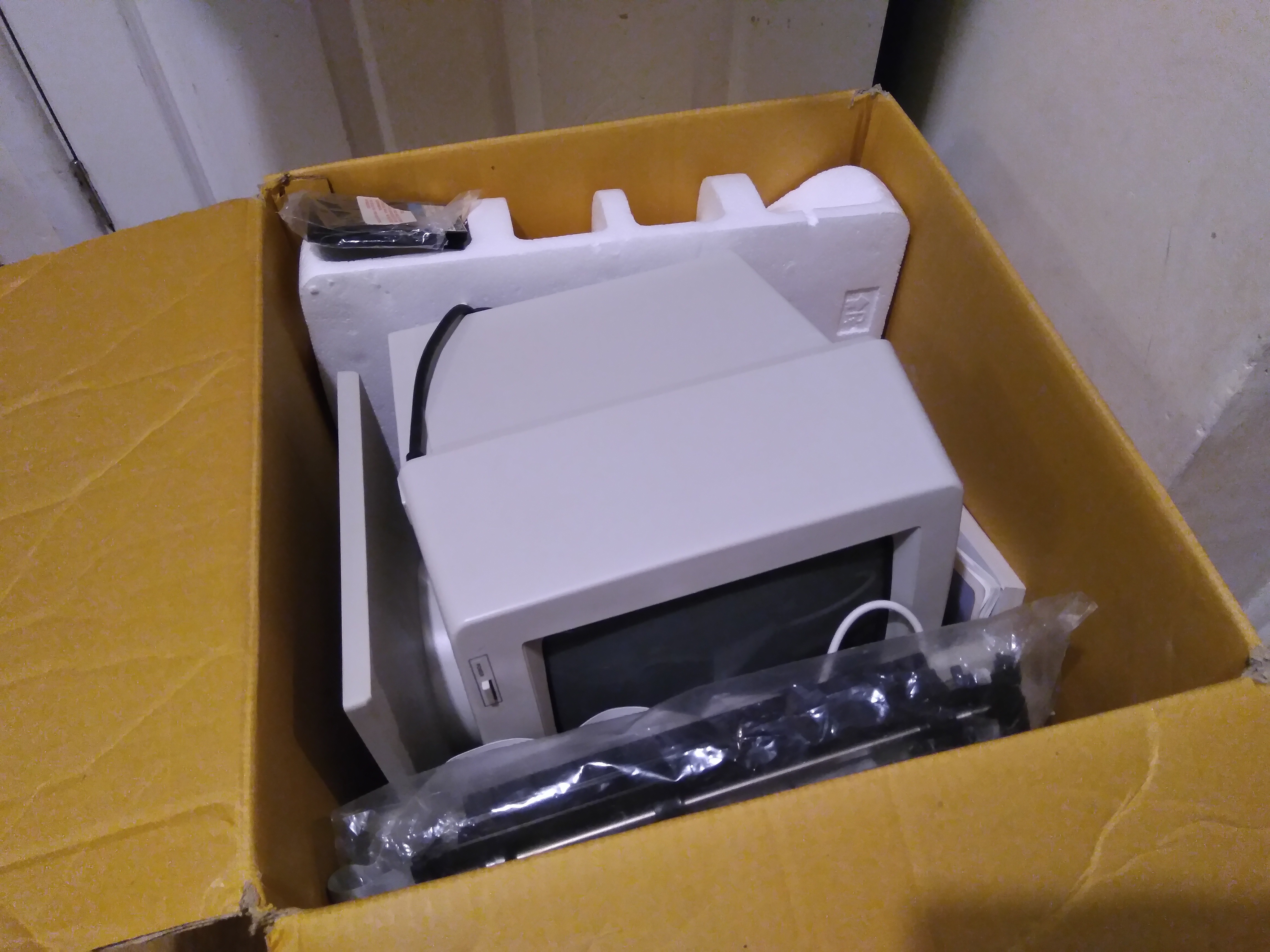
It turned out to be really nice and clean, so I'm going to use that one as my working PCW, and cannibalise the original one for the project. I'd upgraded the old one to 512Kb, so I moved the extra RAM to the new one, and moved the disk drive over as the newer drive needs a new drive belt.
The old PCW's drive belt was pretty much just a rubbery mush when I got it, and was a right pain to scrape out of the drive, but the new one's belt was just a bit stretched, so it should work fine with a replacement.
Although the new computer is much cleaner, there are a few things I don't like about it so much. On the old computer, the Amstrad logos on the keyboard and screen were textured metallic labels, while the new ones are cheap printed plastic labels:


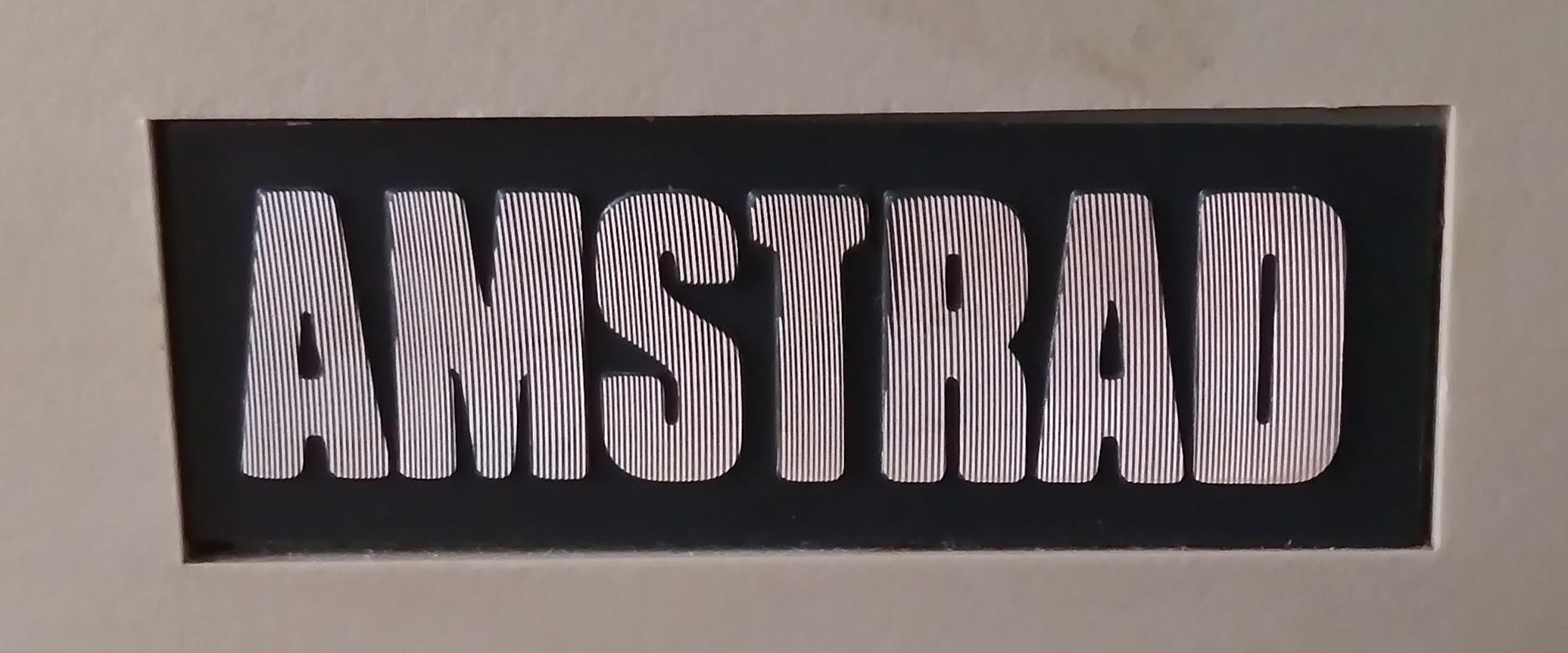

Oddly, while they increased the space on the display so that the label could include the model number, they didn't shrink the space on the keyboard, which makes the label look really out of place.
Also, on the new computer the power and brightness controls were labelled with sticky labels, instead of being printed on the case. I particularly dislikes that the labels were in different fonts, weights and sizes and that POWER was all in capitals and Brightness wasn't, so I removed the labels to see what was beneath them, and discovered what I think is Spanish labelling. Brillo is Spanish for Brightness at least — I guess A. Red means something to do with power.
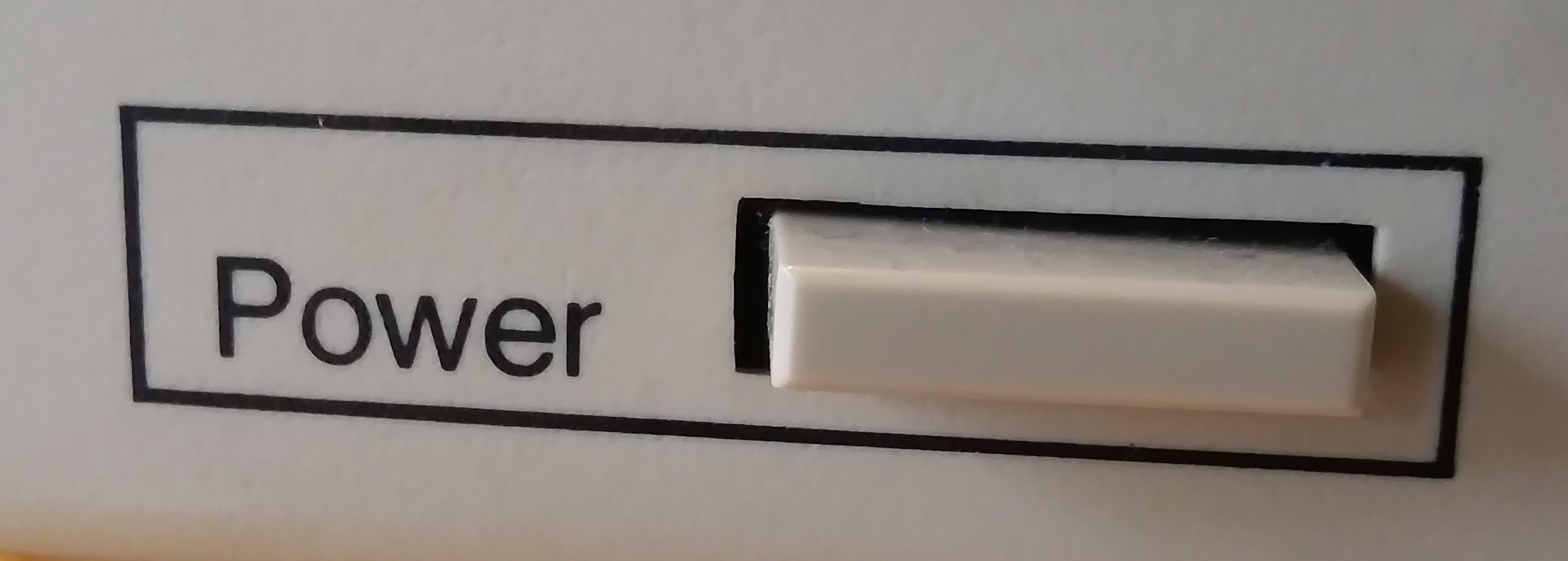
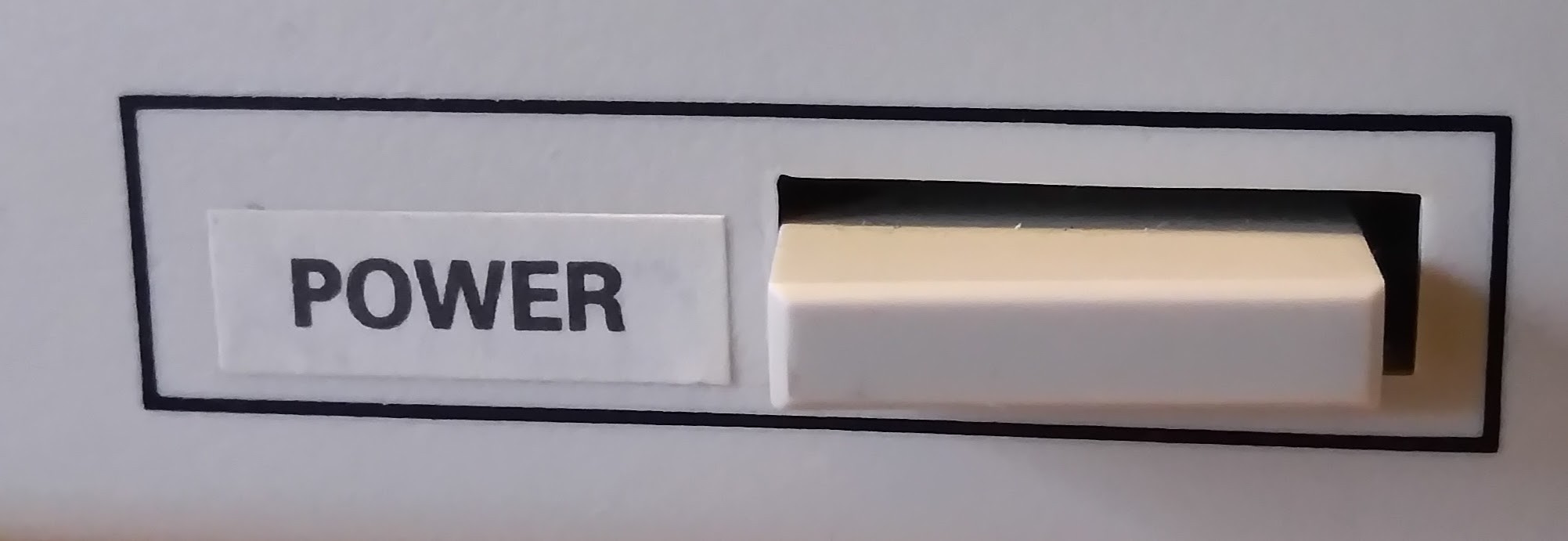



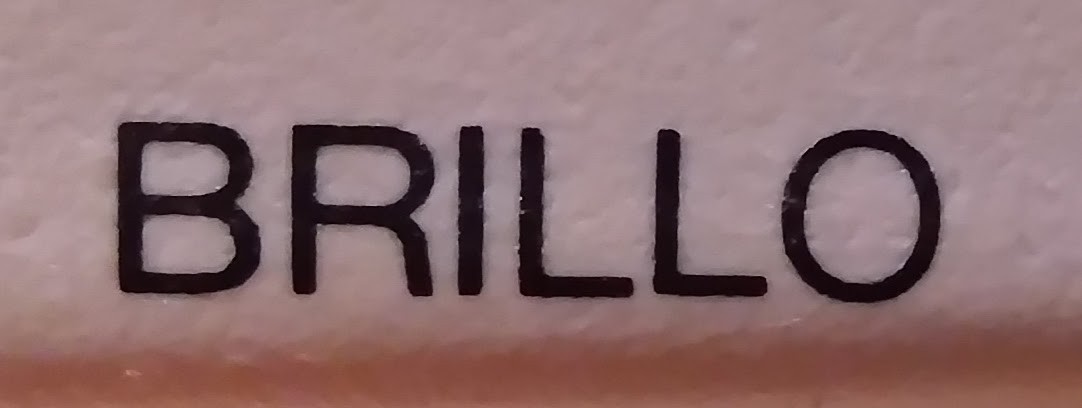
It's a bit strange that the case would be printed in Spanish and then modified to be in English — especially as the panel below the disk drive is all in English. I wonder if Amstrad made too many Spanish computers and had to modify them to sell in England instead.
Despite these things, the new computer was much cleaner inside, especially the CRT and its electronics, so there's a good chance it'll last longer, so it's the one I'm going to keep.
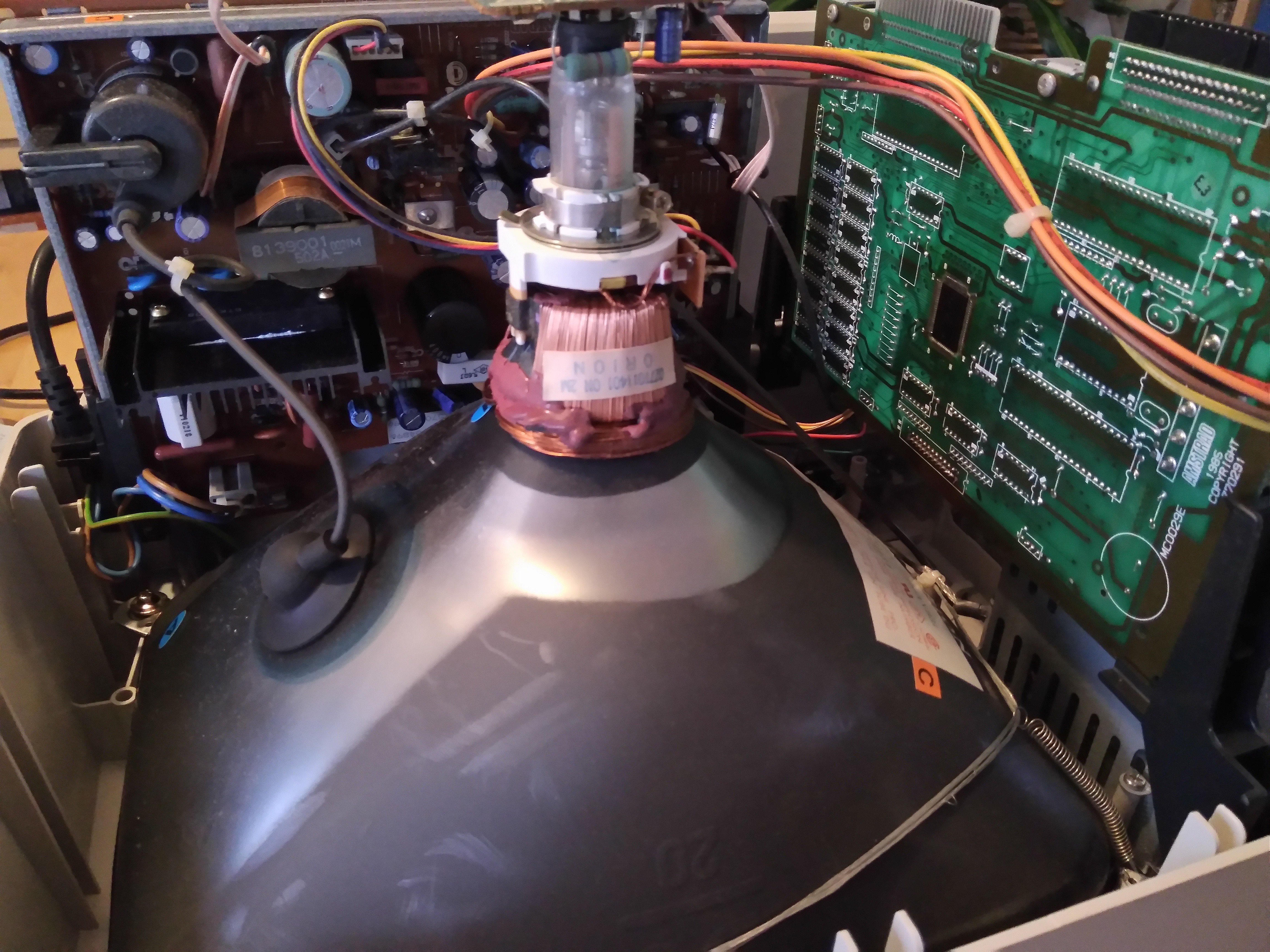
I got the new computer (with the old memory and disk drive) booted up into LocoScript and had a play round, and discovered that the printer works. Which was a surprise, as I'd expected the ribbon to have completely dried out by now. I'd forgotten just how slow the PCW printer was, and my six year-old son was finding it quite interesting. He liked LocoScript's direct printing mode, where it acts a bit like an electric typewriter and prints each line when you press return.
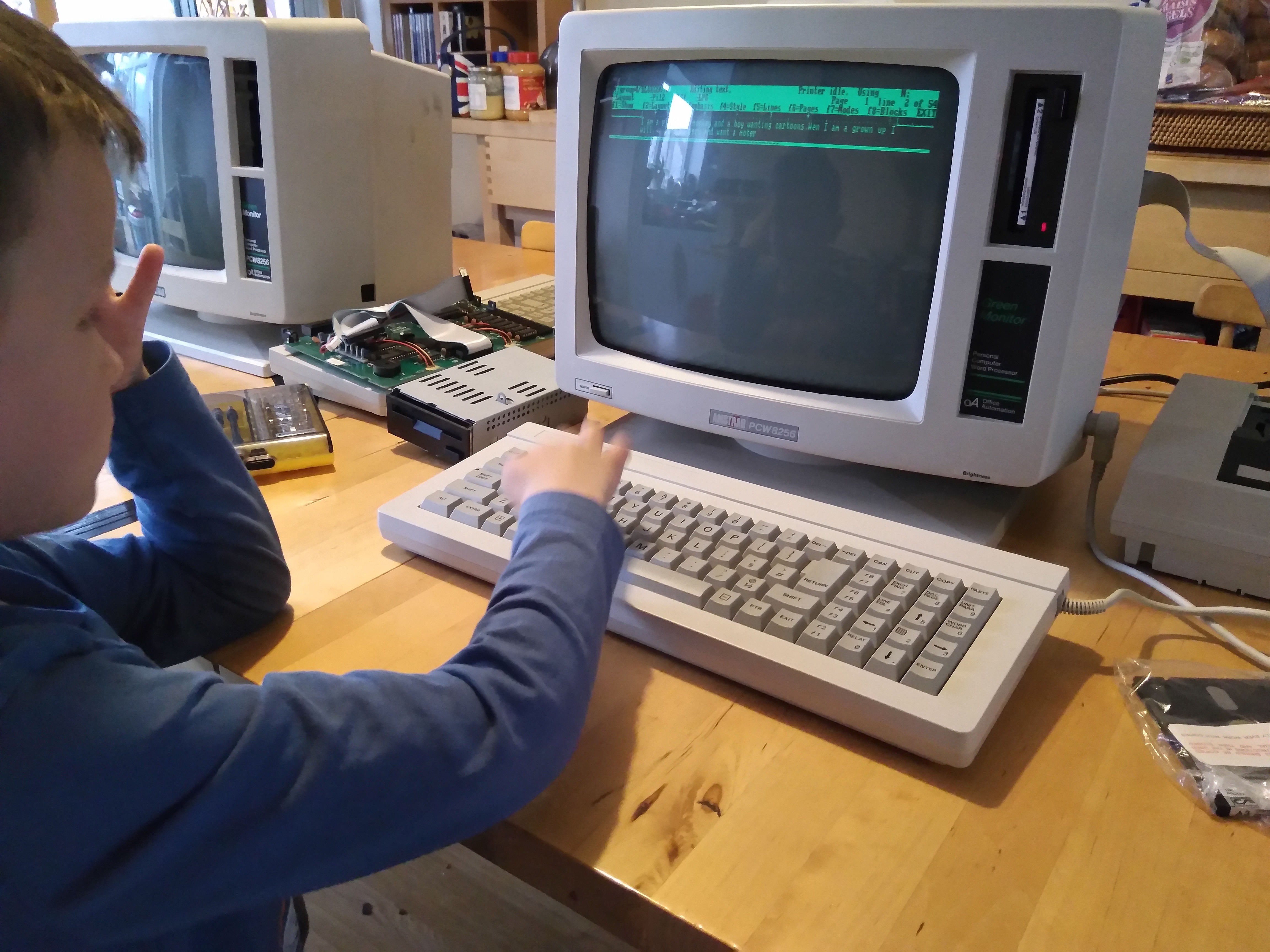
Next up I have a few things I might do:
- Fix the drive belt in the new disk drive.
- Try to get a 3.5" disk drive to work.
- Try to get the PCW to output to an LCD display.
- Connect up a logic analyser and see how everything really works.
 James Ots
James Ots
Discussions
Become a Hackaday.io Member
Create an account to leave a comment. Already have an account? Log In.
> So I bought one on eBay for £5.50
That's an amazing price!
Are you sure? yes | no